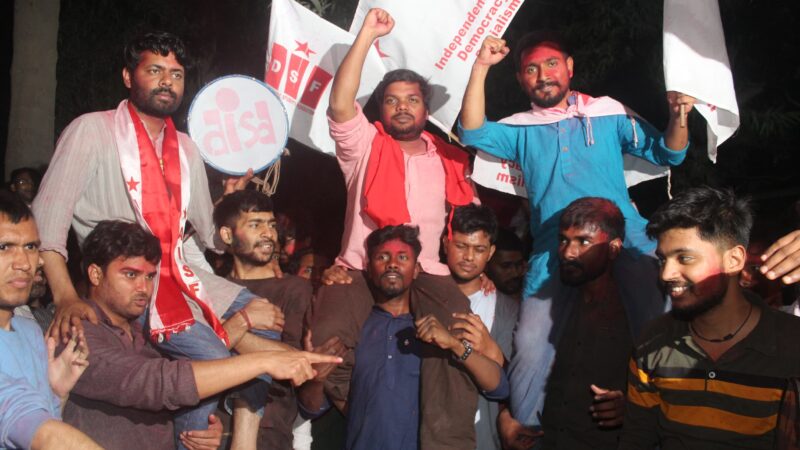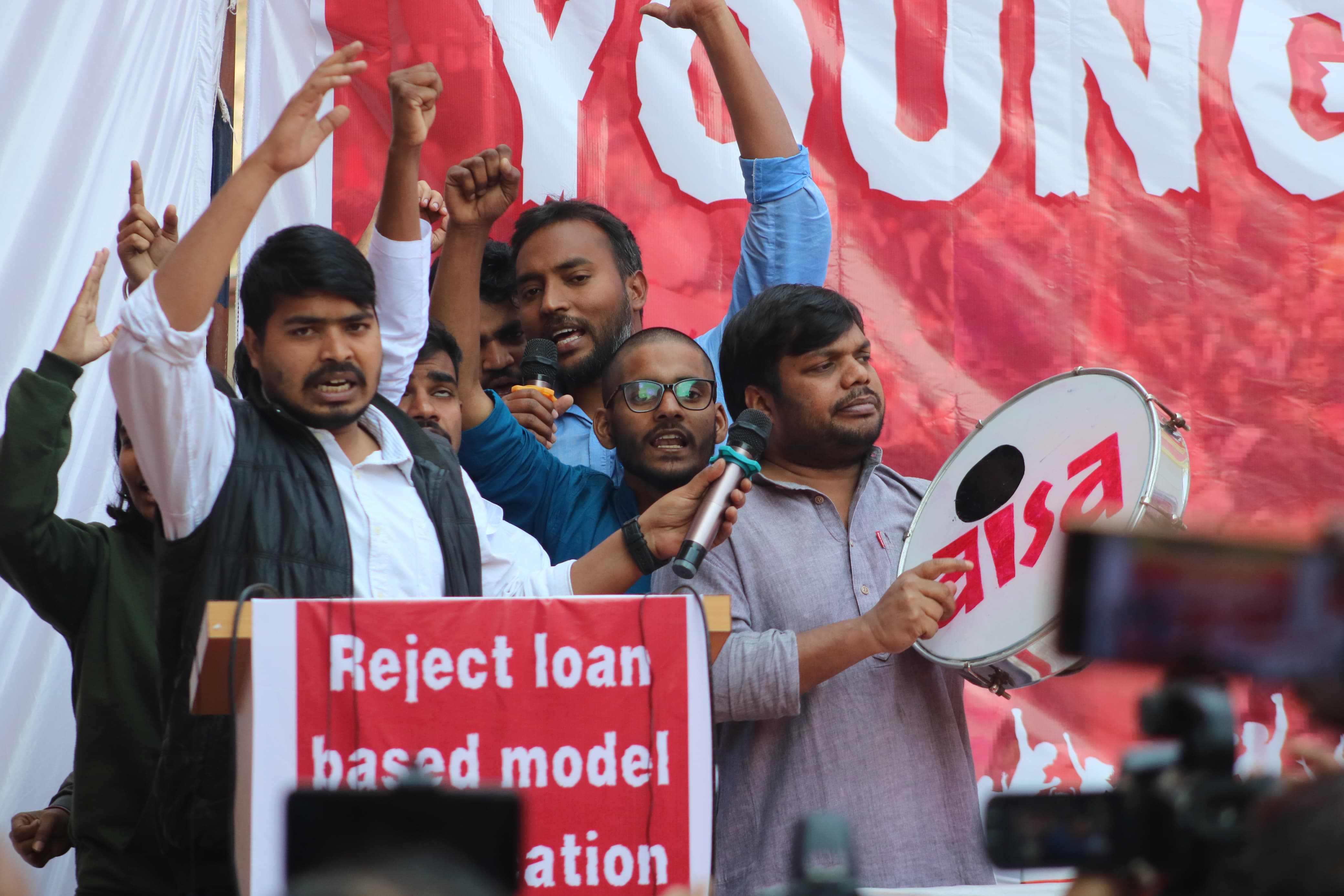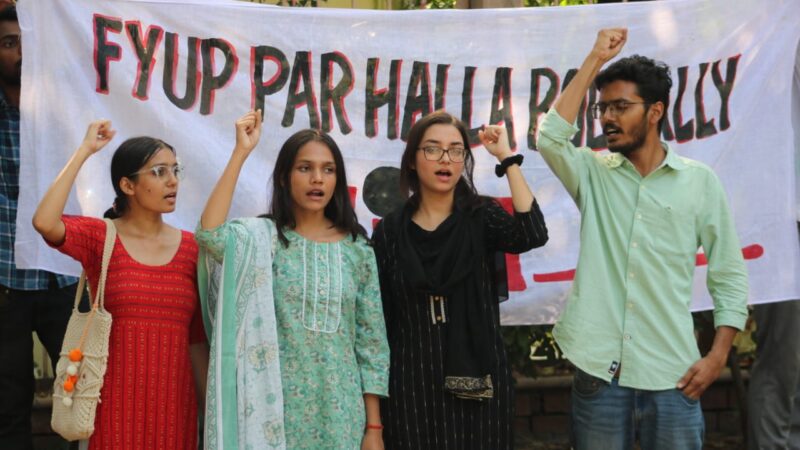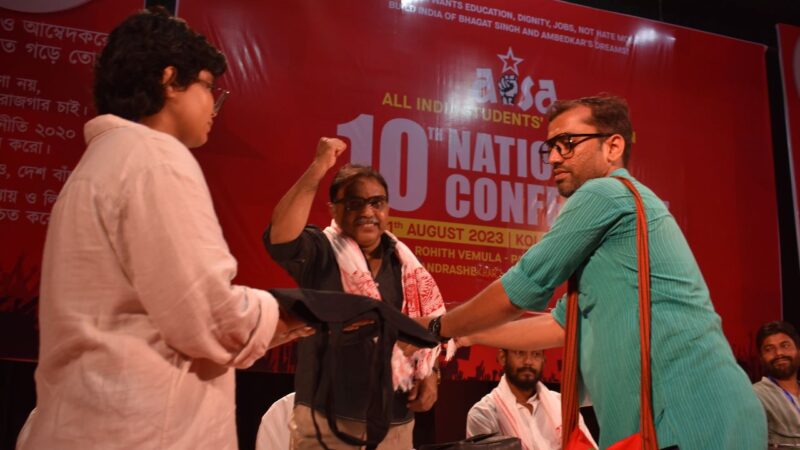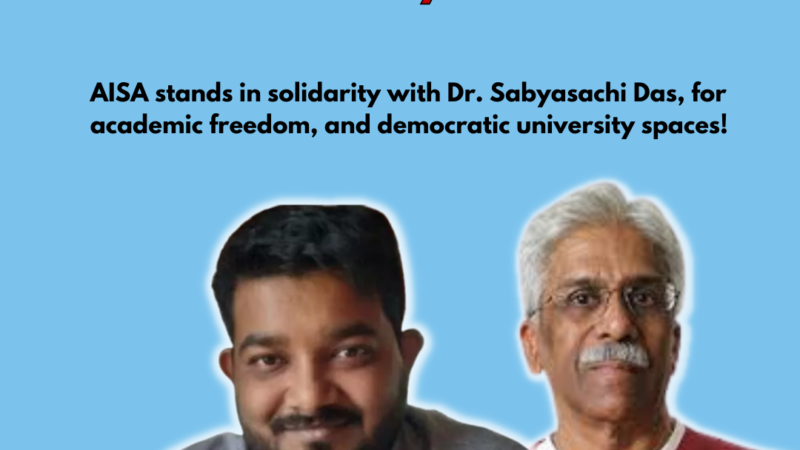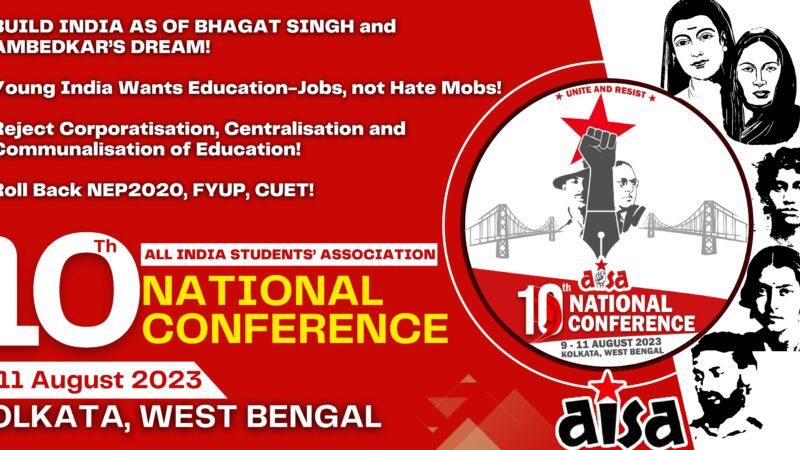Imposing ‘Yes Boss’ Culture: All-Out Saffronization: Censor Board to Corporate Media
 Under the present dispensation of Modi regime, we have been witnessing concerted assaults on the very idea of autonomous institutions and constitutional principles of democracy and justice. On26 Jan 2015, the Union Information and Broadcasting Ministry released advertisements of the Indian constitution without the words “Secularism” and “Socialism” – words and spirits that are enshrined in our constitution.
Under the present dispensation of Modi regime, we have been witnessing concerted assaults on the very idea of autonomous institutions and constitutional principles of democracy and justice. On26 Jan 2015, the Union Information and Broadcasting Ministry released advertisements of the Indian constitution without the words “Secularism” and “Socialism” – words and spirits that are enshrined in our constitution.
Recently, senior journalist and associate editor of IBN7 Pankaj Srivastava was sacked hours after he sent an SMS to his bosses complaining of IBN7’s politically biased policy and suggesting balanced coverage. Before this, head of the Central Board of Film Certification (CFBC) Leela Samson as well as several members resigned, complaining of the government’s interference in the CFBC functioning – only to be promptly replaced by a new team consisting unabashedly of BJP members and Modi cheerleaders!
Saffronising Institutions: The composition of the newly constituted Censor Board clearly show how this “Yes Boss” culture is being brazenly imposed. Here is a brief description the new CBFC members:
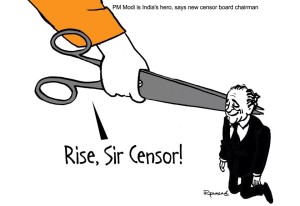
Pahlaj Nihlani (Chairperson): Self-proclaimed Modi fan. “I am proud to say I am a BJP person. I believe in BJP. Narendra Modi is the voice of the nation….He is my action hero. He is a visionary person,” says Nihalani. Nihlani’s claim to fame is his six-minute campaign video for Modi titled “Har Har Modi, Ghar Ghar Modi”.
Mihir Bhuta: film-writer and author of Samaajik Samrasta, a book based on Prime Minister Narendra Modi’s speeches and writings. His twitter handle is @iamhindu !!!!
Ramesh Patange: editor of a Marathi Weekly, is known to be an ideologue of the RSS. He is a founder member of the Samajik Samarasata Manch, a social equality forum of the RSS. This is what Ramesh Patange has to say about caste in Indian society: “Why does the Hindu love his caste (jaati)? Because the jaati gives identity and security, both social and economic”!
George Baker: an actor who has been seen in many Assamese and Bengali movies. He joined the BJP last year and contested from Howrah Lok Sabha seat in West Bengal.
Chandra Prakash Dwivedi: best known for his portrayal of Chanakya in the teleserial based on Chanakya.
Jeevitha: Telugu actress and BJP’s spokesperson in Telangana.
Vani Tripathi: National secretary of the BJP.
SV Shekhar: A Tamil playwright and actor, joined the BJP in 2013.
Ashok Pandit: Filmmaker and self-declared Modi supporter.
Syed Abdul Bari: Vice Chancellor of Central University of Gujarat.
So, now, we have a virtually all-BJP national Film Censor Board of BJP and RSS supporters, caste apologists and adherents to political ‘Hindutva’. And if official bodies such as the CFBC are being ideologically and politically transformed to serve the BJP-RSS’s ideological agenda, we are also seeing mobs being used to impose their own brand of ‘censorship’!
Mob Censorship : Let’s take a quick look at some of the most recent instances of mob censorship:
Mob censorship by ABVP prevented a public meeting against the RSS’s ‘Love Jihad’ campaign from taking place in Lucknow University.
In a college in Pune, similarly, the threat of RSS mob violence prevented Anand Patwardhan’s Raam ke Naam from being screened. Just as the threat of ABVP mob violence prevented Sheetal Sathe of Kabir Kala Manch from speaking at St Xaviers’ College.
Sangh mobs have vandalized theatres showing the film PK.
Tamil writer Perumal Murugan was forced to announce his “death as a writer” after right-wing goons threatened him, burnt his books and forced him to leave his town fearing his life.
And these are just few instances of mob censorship in the so-called ‘achchhe din’! In Raam ke Naam, Patwardhan documented the Ram Mandir campaign that, two years after the film’s completion, culminated in the Babri Masjid demolition of 1992. One of the highlights of the film is the interview with Mahant Laldas, the priest in the Ram Janmbhoomi temple who predicts that he will be killed because of his staunch opposition to the Sangh’s Ram Mandir campaign. Three years later, in 1993, Laldas was killed. Laldas was physically eliminated, but thanks to Raam ke Naam, he was never entirely silenced. But Patwardhan had to wage a seven-year long battle in the courts before the national broadcaster Doordarshan was ordered to screen his film. And now, 24 years later, mob violence again sought to silence Laldas and Raam ke Naam. To counter it, Patwardhan had released the film on YouTube.
Patwardhan’s other films too, and documentary films of other filmmakers too, have faced similar battles with censors, fighting to prevent the censors from mutilating their films. One such filmmaker, Pankaj Butalia, who refused to allow censors to cut scenes from his film Textures of Loss, has gone to court challenging the Censorship guidelines of 1992 that allow the Censor Board sweeping powers to maim films. Hearing his petition in the Supreme Court, the judges asked of the part of his film dealing with state terror in Kashmir, “Why is it one-sided? Where is the alternate picture?” and commented that it has “become fashionable” to show only the “human rights” side of the story. The fact is that documentaries like Butalia’s are rare, lone voices showing the testimonies of people who have lose loved ones to custodial killings! The State’s ‘side of the story’, in contrast, is amply represented in a huge volume of popular films as well as mainstream media. After one of the SC judges recused himself from the case, Butalia withdrew the petition from the SC and filed it in the Delhi High Court. The Government has tried to oppose the writ at the admission stage itself! In fact, in 2015, the Modi-era Censor Board itself is beginning to look indistinguishable from the Sangh mob.
Insidious Censorship of the Corporate Media: As far as the corporate media is concerned, the reality of censorship is in a way more subtle, more insidious and more dangerous. On the face of it, we have a ‘free media’, free to report in an unbiased manner. Flying in the face of these tall claims of “freedom of the press” is the virtual absence in the media of several stories: stories of rural India, feudal oppression, poverty, institutional corruption, state repression and scuttling of workers’ rights. So we have 24×7 ‘coverage’, with reporters constantly telling us they are bring us news, even as the news provided to us is highly filtered, sanitised and deprived of any analysis of the existing power hierarchies and corporate control over decision-making. It is in fact a form of censorship which is different in form from the Emergency days, but an equally disastrous blow on the concept of freedom of expression.
These varied forms of censorship – the reshaping of the nature of institutions, the mob violence and intimidation and the insidious censorship within the corporate media – pose a massive threat to values of democracy.
See ALSO :
Dissecting the New Land Acquisition Ordinance
Reject the Politics of Assassination and Appropriation of Gandhi by the Communal Fascist Brigade!
